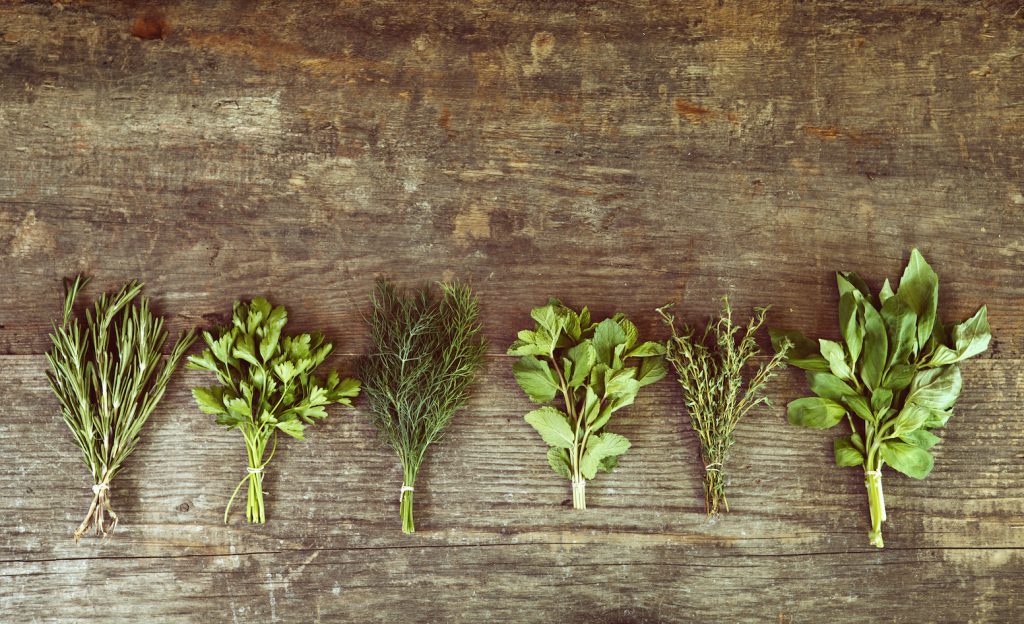Food is Medicine: My Culinary Medicine Chest

With the promise of warm summer days upon us, I find myself daydreaming about and planning my herb garden. Just picked herbs add an entirely new dimension to my summertime culinary creations, but it’s their long-standing medicinal uses that pique my interest when planning the garden.
My top 5 herbs include:
- Basil, well known for its use in Italian cuisine, but is also a popular ingredient in Indian and Vietnamese cooking. A veritable nutrition goldmine, Researchers at Purdue University found that basil “contains a wide range of essential oils, rich in phenolic compounds and a wide array of other natural products including polyphenols such as flavonoids and anthocyanins.” Basil is delicious in salad, sprinkled on vegetables and especially wonderful with fresh tomatoes and a drizzle of olive oil.
- Parsley, easily the most common herb used in America, is rich in apigenin – an antioxidant that enhances the potency of other antioxidants, including glutathione and superoxide dismutase. Researchers at Harvard Medical School found high apigenin intake associated with lower rates of ovarian cancer. Parsley is delicious added to vegetables, salads and meat dishes or try quinoa tabbouleh.
- Sage is known to offer a cognitive boost. Patients with mild to moderate Alzheimer’s experienced significant improvements in cognitive function when given sage extract over four months. In addition, it has been shown to improve memory in younger people. In another study, patients with poorly controlled type 2 diabetes, experienced positive changes in their blood sugar after three months of sage supplementation. To retain its flavor, use at the end of cooking. Add to roasted root vegetables, poultry and soups.
- There are more than 100 varieties of thyme, but they all have one thing in common, the volatile oil thymol. The powerful antiseptic quality of thymol has been well studied and has been found to have antimicrobial activity against a number of foodborne pathogens. It has even been shown to decontaminate previously contaminated food. Sprinkle it over salad, add it to poultry or soup or use it in marinades.
- Peppermint has long been known to treat colic and an upset digestive tract. Several studies have shown it to be effective at relieving the pain associated with irritable bowel syndrome. Fresh peppermint gives a burst to any hot or cold beverage, and peppermint is a welcome addition to fruit and vegetable salads.
Bonus herb: No garden would be complete without the happy, colorful faces of nasturtiums. The edible, antioxidant rich flowers add color and a peppery zip to any fresh salad and a delightful addition to eggs. The leaves are particularly rich in vitamin C and the seedpods can be used like fresh capers.
Whether you purchase them from a local market or try planting them yourself, I encourage you to try fresh herbs this season to help re-invent your favorite recipes. Bon Appetit!

